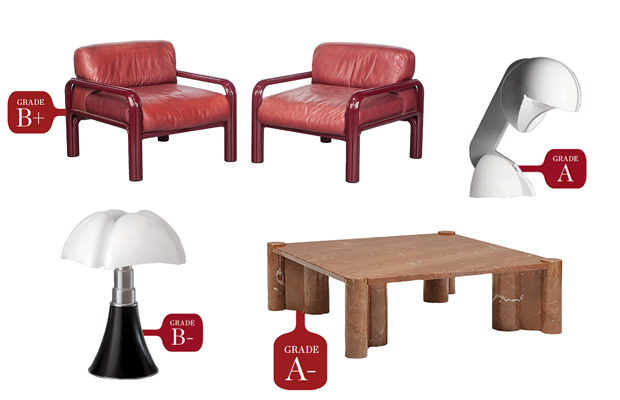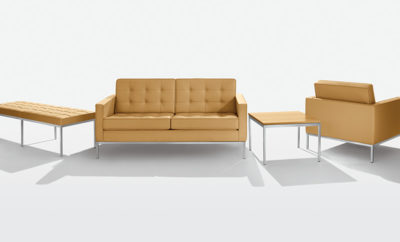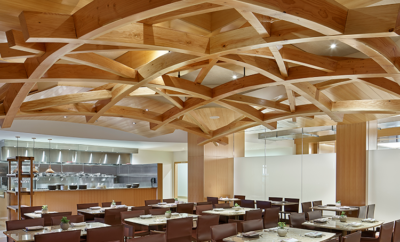 HERITAGE AUCTIONS | COURTESY WRIGHT (2) | ULTRA MODERNE, PARIS
HERITAGE AUCTIONS | COURTESY WRIGHT (2) | ULTRA MODERNE, PARIS
Design
Grading System: Gae Aulenti
TROY SEIDMAN LOOKS AT THE WORK OF THE ITALIAN ARCHITECT AND DESIGNER, WHO, LIKE MANY OF HER FEMALE CONTEMPORARIES IN THE ART AND DESIGN REALM, HAS BEEN DRAMATICALLY UNDERVALUED IN COMPARISON WITH HER MALE COUNTERPARTS
WHILE IT’S NOT A FORMAL MOVEMENT, it has more gravitas than a trend: dealers, curators, scholars, and writers are increasingly dismantling the design canon in order to include or consider more female creators. As I write this, I am in the midst of reading Gail Levin’s impressive biography of Lee Krasner. Just last week, I was blown away by the debut exhibition at Hauser Wirth and Schimmel in Los Angeles, Revolution in the Making: Abstract Sculpture by Women 1947–2016. So a combination of zeitgeist and personal curiosity brings us to the latest subject for Grading System: Gae Aulenti, the accomplished Milanese architect and designer. Both celebrated and debated during her lifetime, in recent years she has fallen from discussions despite a versatile and illustrious career.
After graduating from the Milan Polytechnic School of Architecture, she worked as an art director for a decade at the legendary Italian architecture magazine Casabella. In the 1960s, thanks to the connections she made at the magazine, her career flourished. By the end of the decade she had designed numerous showrooms and retail spaces (including Max Mara in Milan, Dior in Paris, and Fiat in Zurich).
In addition to these interior architecture projects, she also designed lighting and furniture for the best Italian manufacturers, including Kartell, Artemide, Venini, and Zanotta (with several pieces having been conceived for her interiors). In 1969 Aulenti finished the “Home of a Collector” in Milan—one of the first examples of open-concept living. It would lead to many other art-related projects throughout her career, from a large gallery at the Centre Pompidou in Paris to the Asian Art Museum in San Francisco.
Aulenti also had a fruitful relationship with Knoll for more than a decade. She first designed its Boston showroom in 1968, followed by its New York City space the following year. In 1971 Knoll briefly distributed pieces from her (shortlived) Tennis collection of seating and bed frames and subsequently developed the Aulenti Collection, which debuted in 1976, their most successful collaboration.

COURTESY WRIGHT
Lampe Ruspa • 1967
WHILE FRANK GEHRY AND JOE COLOMBO have auction records in the six figures and one of Milanese architect/designer Ignazio Gardella’s modular bookshelves achieved nearly $70,000 in November 2015 at Piasa in Paris, Aulenti’s auction record is a fraction of such prices. Her high was less than $10,500, for one of her mysterious Lampe Ruspa table lamps at Sotheby’s in Paris in February, and that amount reflects in part that it was realized in black instead of the typical white. The Lampe Ruspa appeared, typically as a pair, in Aulenti’s published interiors in the 1960s and beyond in magazines such as Vogue. As a duo, the overall form resembles a stylized robotic bouquet of amaryllis. As a single fixture, it suggests many possible references: Brancusi’s notorious Princess X sculpture? A hooded figure? A cyborg nun? But translating its name reveals a surprising inspiration: “Ruspa” means bulldozer in Italian. While Aulenti’s best lighting designs were created in the late 1960s and early 1970s, most have not been reissued. They tend to hammer down at under $2,000, making them exceptionally good value for collectors interested in twentieth-century (Italian) design.












